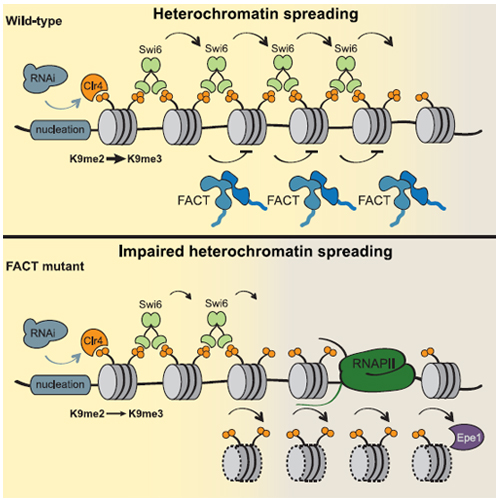The histone chaperone FACT facilitates heterochromatin spreading by regulating histone turnover and H3K9 methylation states
2021-11-02
Magdalena Murawska, R.A. Greenstein, Tamas Schauer, Karl C.F. Olsen, Henry Ng, Andreas G. Ladurner, Bassem Al-Sady and Sigurd Braun
Cell Reports, 37, 109944, 2021
Heterochromatin formation requires three distinct steps: nucleation, self-propagation (spreading) along the chromosome, and faithful maintenance after each replication cycle. Impeding any of those steps induces heterochromatin defects and improper gene expression. The essential histone chaperone FACT (facilitates chromatin transcription) has been implicated in heterochromatin silencing, but the mechanisms by which FACT engages in this process remain opaque. Here, we pinpoint its function to the heterochromatin spreading process in fission yeast. FACT impairment reduces nucleation-distal H3K9me3 and HP1/Swi6 accumulation at subtelomeres and derepresses genes in the vicinity of heterochromatin boundaries. FACT promotes spreading by repressing heterochromatic histone turnover, which is crucial for the H3K9me2 to me3 transition that enables spreading. FACT mutant spreading defects are suppressed by removal of the H3K9 methylation antagonist Epe1. Together, our study identifies FACT as a histone chaperone that promotes heterochromatin spreading and lends support to the model that regulated histone turnover controls the propagation of repressive methylation marks.








